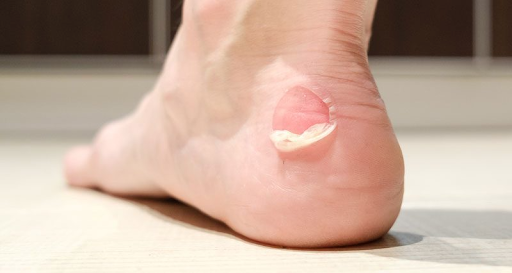Foot pain from tight shoes is a common issue faced by many individuals, whether in professional settings, casual outings, or during athletic activities. This comprehensive guide will walk you through effective strategies for alleviating discomfort, understanding your footwear choices, and ensuring that your feet remain healthy and happy.
Understanding Foot Pain from Tight Shoes
The first step in alleviating foot pain is to understand its root causes. Tight shoes can cause a range of issues, including blisters, bunions, and general soreness. Here are some key factors that contribute to foot pain from shoes:
- Improper Fit: Shoes that are too narrow or short can compress the toes, leading to pain and discomfort.
- Inadequate Support: Lack of arch support can cause additional strain on the foot, exacerbating pain.
- Material and Construction: Rigid materials can cause rubbing and chafing, contributing to foot pain.
Signs That Your Shoes Are Too Tight
Identifying whether your shoes are causing discomfort is crucial. Look out for the following signs:
- Redness or swelling on the toes
- Pain when standing or walking
- Frequent blisters or calluses
- Difficulty in wiggling your toes
If you experience any of these symptoms, it may be time to reassess your footwear choices.
Practical Tips to Relieve Foot Pain
1. Choose the Right Size and Style
When selecting shoes, ensure proper fit. Measure both feet, as many people have one foot slightly larger than the other. Here are some tips:
- Opt for shoes with a wider toe box.
- Make sure there is approximately a thumb’s width of space between your longest toe and the front of the shoe.
- Consider adjustable styles, like sneakers with laces or sandals with straps.
2. Use Footwear Aids
Several accessories can help improve the comfort of tight shoes. Consider using:
- Insoles: Custom or cushioned insoles can provide added support.
- Shoe Stretchers: These can help widen the shoes.
- Gel Pads: They can alleviate pressure points.
3. Break Them In Gradually
New shoes can often be too tight at first. Slowly wearing them for short periods can help stretch the material and decrease discomfort.

4. Opt for Stretching Techniques
To help alleviate tightness, consider these stretching methods:
- Warm Up: Before putting on your shoes, warm your feet by soaking them in warm water.
- Calf Raises: Stand up and raise your heels off the ground, stretching your arch and calf muscles.
Case Studies: Real-World Footwear Experiences
Case Study 1: Jessica’s Marathon Experience
Jessica, an avid runner from California, faced severe foot pain due to tight running shoes. After experiencing blisters and soreness during her training, she decided to explore her options:
- She switched to shoes with a wider toe box and added custom insoles.
- Gradually broke in her new shoes over two weeks.
As a result, Jessica was able to complete her marathon comfortably, proving the importance of proper footwear.

Case Study 2: Mark’s Corporate Experience
Mark, a marketing executive who spends long hours at the office, struggled with foot discomfort due to stylish but tight dress shoes. He took the following steps:
- He invested in shoe stretchers and gel pads.
- Changed to more flexible dress shoes that offered better support.
Mark’s case demonstrates that even professional attire can be comfortable if the right choices are made.
Comparison of Popular Shoe Brands and Models
When it comes to relieving foot pain, not all shoes are created equal. Below is a comparison table of popular brands that are recognized for comfort and support in the U.S. market.

| Brand | Model | Key Features | User Rating |
|---|---|---|---|
| Addi | Addi Comfort Sneakers | Extra cushioning, breathable fabric | 4.5/5 |
| Balleto | Balleto Wide Toe Box Flats | Luxurious leather, arch support | 4.6/5 |
| Hokas | Hoka One One Bondi | Maximal cushioning, lightweight | 4.8/5 |
| Dansko | Dansko Professional Clogs | Firm arch support, slip-resistant | 4.7/5 |
Pros and Cons of Various Solutions
Footwear Aids
| Solution | Pros | Cons |
|---|---|---|
| Insoles | Enhanced support and comfort | Can take time to adjust |
| Shoe Stretchers | Effective for widening shoes | Not all shoes respond well |
| Gel Pads | Targeted relief for pressure points | May require frequent replacement |

Frequently Asked Questions
1. How can I tell if my shoes fit properly?
Your shoes should fit snugly without pinching any area of your foot. You should have about a thumb width of space at the front of the shoe.
2. Can tight shoes cause long-term damage?
Yes, consistently wearing tight shoes can lead to conditions like bunions, hammertoes, and chronic pain.

3. What types of shoes should I avoid?
Avoid shoes that have a narrow toe box or lack proper arch support.
4. Is it better to buy shoes in the morning or evening?
It’s best to try on shoes in the evening when your feet are slightly swollen after daily activities, ensuring a more accurate fit.

5. How often should I replace my running shoes?
Running shoes should typically be replaced every 300 to 500 miles, depending on your running style and the shoe’s design.
6. Can orthotics help with foot pain?
Yes, orthotics can provide additional support and improve foot alignment, helping to relieve pain.

7. What should I do if my new shoes still hurt after breaking them in?
If pain persists, consider consulting with a podiatrist or look into alternative footwear options.
Final Thoughts
Relieving foot pain from tight shoes is not only crucial for comfort but essential for overall foot health. By making informed choices regarding footwear, using appropriate aids, and understanding the mechanics of your feet, you can significantly enhance your comfort. Remember to listen to your body and seek professional advice when necessary. Your feet deserve care, and with the right knowledge, you can ensure they receive it.
